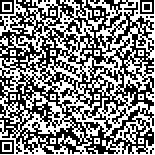| 引用本文: | 董世杰,李英海,吴江,杨恒,李清清.近60年洞庭湖水位演变态势研究.湖泊科学,2024,36(2):575-586. DOI:10.18307/2024.0241 |
| Dong Shijie,Li Yinghai,Wu Jiang,Yang Heng,Li Qingqing.Water level changes of Lake Dongting in recent 60 years. J. Lake Sci.2024,36(2):575-586. DOI:10.18307/2024.0241 |
|
| |
|
|
| 本文已被:浏览 2556次 下载 2393次 |

码上扫一扫! |
|
|
| 近60年洞庭湖水位演变态势研究 |
|
董世杰1, 李英海1,2, 吴江3, 杨恒4, 李清清3
|
|
1.三峡大学水利与环境学院, 宜昌 443002;2.水电工程施工与管理湖北省重点实验室(三峡大学), 宜昌 443002;3.长江水利委员会长江科学院, 武汉 430010;4.中国长江三峡集团有限公司科学技术研究院, 北京 101199
|
|
| 摘要: |
| 辨析洞庭湖历史水位演变态势对保护湖泊生态系统健康运转以及确保长江中下游防洪安全和水资源利用均至关重要。为了定量评估洞庭湖近60年来水位变化特征、程度及规律,基于洞庭湖鹿角、杨柳潭和南咀水文站1961-2020年逐日水位监测数据,应用Mann-Kendall检验法、小波分析法、累积距平法、滑动t检验法等方法对洞庭湖水位变化趋势性、周期性、突变性进行分析,进而采用IHA-RVA法综合评价洞庭湖突变年前后各站点水位改变度和整体水位改变度。研究结果表明:(1)1961-2020年,鹿角站和杨柳潭站年均水位呈上升趋势,南咀站年均水位呈下降趋势;3个站点水位周期性变化较为明显,呈现4~5个时间尺度的周期变化规律,第一主周期为55~56年;鹿角站水位突变年份为1979、2003年,杨柳潭站水位突变年份为1978、2003年,南咀站水位突变年份为2003年,综合确定2003年为3个站点突变年份。(2)通过分析突变前后3个站点的水位、时间、频率、延时和改变率5组32个水位指标改变度,发现杨柳潭站水位改变度大于鹿角站和南咀站,鹿角、杨柳潭、南咀站的整体水位改变度分别为43%、48%、42%,均属于中度改变。该研究可为进一步解析洞庭湖水文情势演变规律以及为长江中下游通江湖泊水资源合理利用和水生态环境保护提供参考依据和数据支撑。 |
| 关键词: 洞庭湖 水位演变 水位变化特征 水位改变度 IHA-RVA法 |
| DOI:10.18307/2024.0241 |
| 分类号: |
| 基金项目:中国长江三峡集团有限公司科研项目(202203202)、长江科学院开放研究基金项目(CKWV2021889/KY)和国家自然科学基金项目(52009079)联合资助。 |
|
| Water level changes of Lake Dongting in recent 60 years |
|
Dong Shijie1, Li Yinghai1,2, Wu Jiang3, Yang Heng4, Li Qingqing3
|
|
1.College of Hydraulic and Environmental Engineering, China Three Gorges University, Yichang 443002, P.R. China;2.Hubei Key Laboratory of Construction and Management in Hydropower Engineering, China Three Gorges University, Yichang 443002, P.R. China;3.Changjiang River Scientific Research Institute, Changjiang Water Resources Commission, Wuhan 430010, P.R. China;4.Institute of Science and Technology, China Three Gorges Corporation, Beijing 101199, P.R. China
|
| Abstract: |
| Analyzing the historical water level evolution trend of Lake Dongting is crucial for its protection, ensuring flood control safety and water resource utilization in the middle and lower reaches of the Yangtze River. In order to quantitatively evaluate the characteristics, degree and law of water level change in Lake Dongting in the past 60 years, this study collected the daily water level monitoring data of Lujiao, Yangliutan and Nanzui Hydrological Stations in Lake Dongting from 1961 to 2020. Using statistical approaches including Mann-Kendall test, wavelet analysis, cumulative anomaly, sliding T test, we examined the trend, periodic and mutation of water level change in Lake Dongting. The IHA-RVA method was thereafter used to comprehensively evaluate the water level change degree of each station and the overall water level change degree before and after the mutation year of Lake Dongting. Results indicated that:(1)From 1961 to 2020, the average annual water level at Lujiao Station and Yangliutan Station showed an upward trend, while a downward trend at Nanzui Station. Water levels at the three stations exhibited a periodic significant variation pattern of 4-5 time scales, with the first main period being 55 to 56 years. The years of sudden water level changes at Lujiao Station were at 1979 and 2003, Yangliutan Station were at 1978 and 2003, and Nanzui Station were at 2003, resulted in a comprehensive determination of 2003 as the year of mutation for the three stations.(2)By analyzing the change degree of 32 water level indexes in 5 groups of water level, time, frequency, delay and change rate of the three stations before and after the mutation, it was found that the change degree of water level at Yangliutan Station was greater than that at Lujiao Station and Nanzui Station. The overall water level changes at Lujiao, Yangliutan, and Nanzui stations were 43%, 48%, and 42%, respectively, all of which belong to moderate changes. This study can provide reference and data support for further analyzing the evolution law of the hydrological regime of Lake Dongting, as well as for the rational utilization of water resources and water ecological environment protection in the middle and lower reaches of the Yangtze River river-connected lakes. |
| Key words: Lake Dongting water level evolution characteristics of water level change water level change degree IHA-RVA method |
|
|
|
|